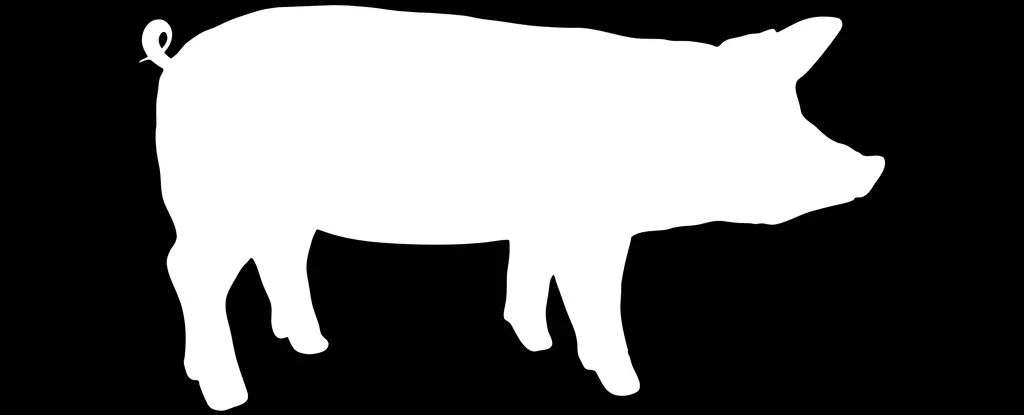The recent discovery of a pig infected with the A/H5N1 strain of bird flu in Oregon has raised significant alarm regarding the ongoing threat of avian influenza. This infection marks a notable turning point in animal health management and public safety, especially as the virus has demonstrated an unsettling capacity to adapt and infect a wider array of species—including pigs, which serve as unique hosts for genetic mixing. This article delves into the implications of this development, the epidemiological concerns associated with A/H5N1, and the necessary responses to mitigate the potential risks to humans.
The A/H5N1 virus, particularly the clade 2.3.4.4b strain, has historically been confined primarily to avian species. However, a marked change has been observed as the virus has not only spread amongst birds but has also begun infecting mammals, including dairy cattle and now, pigs. The situation is particularly worrying given that pigs exhibit receptors compatible with both avian and human flu viruses, creating the potential for dangerous genetic recombination.
A key characteristic of A/H5N1 infections is their containment largely to agricultural and wild bird populations, leading to limited human exposure. The reported infection in a pig from a non-commercial farm in Oregon underscores a critical danger: if this virus were to establish itself in larger, commercial pig farms, the risk escalates dramatically. The intermingling of various viral strains within such swine facilities can potentially lead to a new strain that is effectively transmissible between humans.
The Mutational Landscape of A/H5N1
Worryingly, mutations within the A/H5N1 strain have been documented, increasing the likelihood of the virus adapting to human hosts. In essence, the crucial interaction between virus and host cells, akin to a “lock and key” mechanism, opens up avenues for the virus to evolve in ways that could enhance its transmissibility among humans. A recent study highlighted alarming mutations in A/H5N1 sampled from infected humans, suggesting an increasing ability for the virus to shift from avian hosts to humans.
Historically, pigs have shown a relatively low susceptibility to A/H5N1 viruses. However, this trend has shifted as A/H5N1 has mutated, leading to increased infection rates in swine. The epidemiological alarm bells are ringing as we recognize that if the virus continues to evolve, we may face a situation where the next human pandemic originates from a recombination event in pigs.
As the COVID-19 pandemic has taught us, early detection is critical in controlling infectious diseases before they spiral out of control. In the case of avian influenza, rigorous surveillance is paramount. The current landscape demands that health authorities implement comprehensive monitoring systems for bird and animal populations, coupled with swift reporting mechanisms for infections. Financial incentives for farmers to report unusual occurrences can foster a culture of transparency and prompt action.
The necessity of a global influenza surveillance strategy also cannot be overstated. As observed with the emergence of the A/H5N1 human case in Australia—resulting from a delayed subtyping effort—swift identification is key to distinguishing between seasonal flu and novel strains with pandemic potential. It is essential that health systems adopt a low threshold for conducting what is known as subtyping influenza A strains in human cases, focusing on differentiating between benign strains and those capable of causing widespread morbidity.
Despite the United States Centers for Disease Control and Prevention (CDC) currently classifying the risk to general public health from A/H5N1 as low, the presence of the virus in various animal populations coupled with its increasing mutations signifies a rising threat. With the widespread manifestation of H5N1 among avian species and now pigs, the chances of potential human infections are alarmingly heightened.
Encouragingly, our preparedness for influenza pandemics has advanced significantly over the years. The capacity to produce vaccines quickly once the genome of a new strain is identified enables us to respond more effectively than in previous health crises. Countries have begun vaccinating high-risk groups, such as farm workers, to fortify defenses against strains that could threaten public health.
In closing, the emergence of avian influenza in pigs sends a clear message about the complexities of zoonotic diseases and the crucial importance of vigilance in disease monitoring. Immediate steps must be taken to enhance surveillance, encourage timely reporting, and strengthen public health readiness to ensure that we can contain what could potentially evolve into a significant health crisis. The stakes could not be higher as we navigate the emerging challenges posed by A/H5N1 and its potential to impact human populations.

